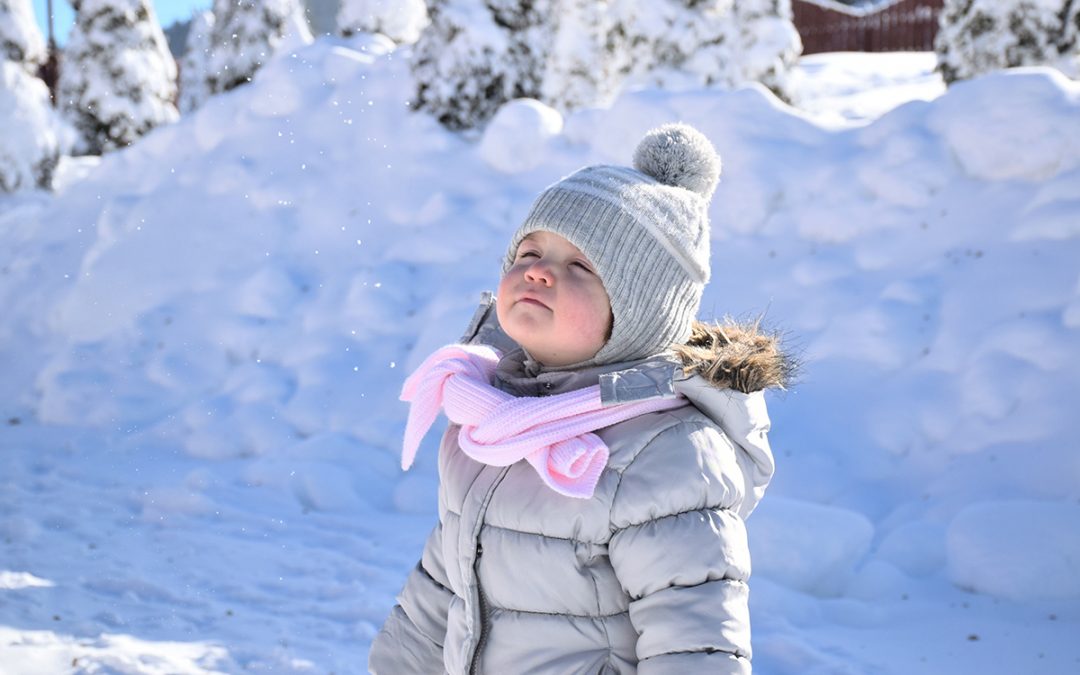April 17th and it’s still snowing?! Can you believe it? We can’t either! While you’re thinking about snow, check out this snow related article from mentalfloss.com! Impress your family and co-workers with the super cool snow fact you’ll learn!
Love it (like when you’re curled up by the fire) or hate it (when you’re on the road), snow is a major part of winter for many people. Get to know the flurries and flakes on a deeper level with these 15 interesting facts.
1. SNOWFLAKES AREN’T THE ONLY FORM OF SNOW.
Snow can also precipitate as graupel or sleet. Not to be confused with hail, graupel (or snow pellets) are opaque ice particles that form in the atmosphere as ice crystals fall through freezing cloud droplets—meaning cloud particles that are colder than the freezing point of water but remain liquid. The cloud droplets group together to form a soft, lumpy mass. Sleet, on the other hand, consists of drops of rain that freeze into small, translucent balls of ice as they fall from the sky.
2. SYRACUSE, NEW YORK TRIED TO MAKE SNOW ILLEGAL.
America’s snowiest major city has an impressive arsenal of plows, but in 1992 it tried a new trick to control white stuff. The city’s Common Council passed a decree that any more snow before Christmas Eve was illegal. As it turns out, Mother Nature is a scofflaw—it snowed just two days later.
3. IT’S A MYTH THAT NO TWO SNOWFLAKES ARE EXACTLY THE SAME.
In 1988, a scientist found two identical snow crystals. They came from a storm in Wisconsin.
4. THE LARGEST SNOWFLAKE MIGHT HAVE BEEN 15 INCHES WIDE.
According to some sources, the largest snowflakes ever observed fell during a snowstorm in January 1887 at Montana’s Fort Keogh. While witnesses said the flakes were “larger than milk pans,” these claims have not been substantiated.
5. SNOW IS TRANSLUCENT, NOT WHITE.
Snow, like the ice particles it’s made up of, is actually colorless. It’s translucent, which means that light does not pass through it easily (like it would transparent glass), but is rather reflected. It’s the light reflected off a snowflake’s faceted surface that creates its white appearance.
But why white? The reason we see objects as colors is because some wavelengths of light are absorbed while others are reflected (remember, light is a spectrum of colors). The object takes on whatever color light is reflected. For example, the sky is blue because the blue wavelengths are reflected while the other colors are absorbed. Since snow is made up of so many tiny surfaces, the light that hits it is scattered in many directions and will actually bounce around from one surface to the next as it’s reflected. This means no wavelength is absorbed or reflected with any consistency, so the white light bounces back as the color white.
6. AND, IN FACT, IT DOESN’T ALWAYS APPEAR WHITE.
Deep snow can often appear blue. This is because layers of snow can create a filter for the light, causing more red light to be absorbed than blue light. The result is that deeper snow appears blue—think about how your snowy footprints compare to the surrounding landscape.
Snow can also sometimes appear pink. Snow in high alpine areas and the coastal polar regions contains cryophilic fresh-water algae that have a red pigment that tints the surrounding snow.
7. EACH WINTER IN THE U.S., AT LEAST 1 SEPTILLION ICE CRYSTALS FALL FROM THE SKY.
That’s 1,000,000,000,000,000,000,000,000—24 zeros!
8. THE MOST SNOW TO FALL IN A 24-HOUR PERIOD IN THE UNITED STATES IS 75.8 INCHES.
In 1921, over six feet of snow fell between April 14 at 2:30 p.m. and April 15 at 2:30 p.m. in Silver Lake, Colorado.
9. COLORADO ALSO HOLDS THE RECORD FOR THE MOST SNOW TO FALL IN A SINGLE CALENDAR DAY.
On December 4, 1913, 63 inches of snow fell on Georgetown, Colorado.
10. SNOW HAS NEVER BEEN REPORTED IN KEY WEST.
The coldest temperature on record for the Florida city (reached on January 13, 1981, and January 12, 1886) is 41 degrees Fahrenheit.
11. NOT EVERY BIG SNOWSTORM IS A BLIZZARD.
In order to be classified as a blizzard, a snowstorm must meet a very specific set of qualifications. Winds must blow at least 35 miles per hour and the snowfall must reduce visibility to less than 0.25 miles for a period of at least three hours.
Other common types of snowstorms include a snow squall (an intense snowfall accompanied by strong winds that only lasts a short time) and a snowburst (a brief, intense snowfall that results in rapid accumulation of snow).
12. IGLOOS CAN BE MORE THAN 100 DEGREES WARMER INSIDE THAN OUTSIDE.
And they’re warmed entirely by body heat. Since fresh, compacted snow is approximately 90 to 95 percent trapped air (meaning it can’t move and transfer heat) it’s a great insulator. Many animals, such as bears, dig deep holes in the snow to hibernate through the winter.
13. NOVA SCOTIA HOLDS THE RECORD FOR THE MOST SNOW ANGELS EVER MADE SIMULTANEOUSLY IN MULTIPLE LOCATIONS.
In 2011, 22,022 Nova Scotia residents in 130 separate locations all plopped down in the snow to make snow angels.
14. NORTH DAKOTA HOLDS THE RECORD FOR MOST SNOW ANGELS MADE SIMULTANEOUSLY IN ONE PLACE.
Back in 2007 it was 8962 people in North Dakota who plopped down in the snow to waggle their arms and legs to make snow angels.
15. FEELING MORE DEVILISH? THE LARGEST SNOWBALL FIGHT ON RECORD TOOK PLACE IN SEATTLE.
Exactly 5834 snow fighters came together to exchange frozen barrages to create the largest snowball fight in the world on January 12, 2013.
Looking for a snow removal company in the Toledo, OH area? Contact us today!

